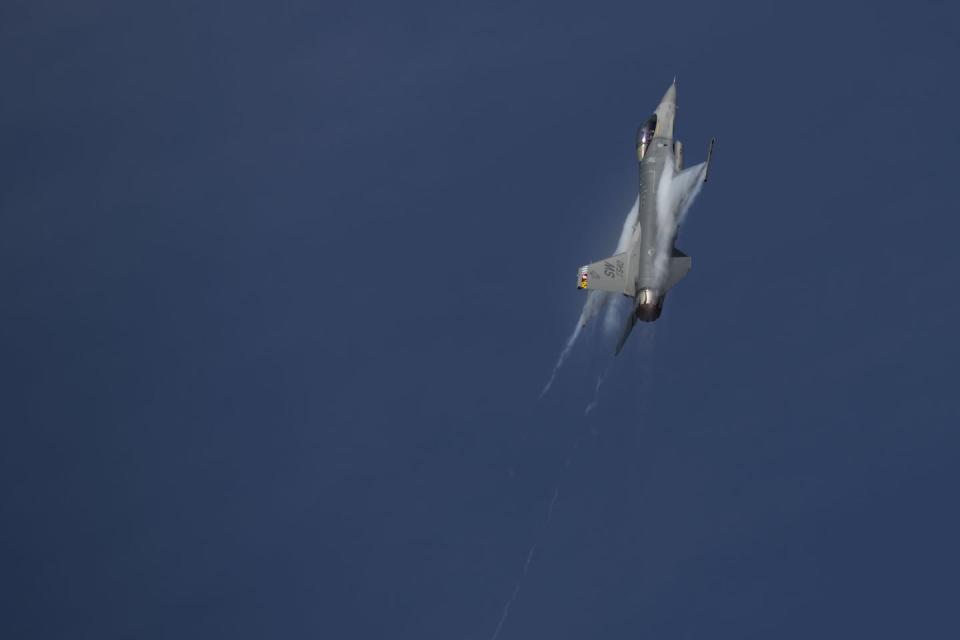Two Pilots Lost Consciousness While Flying. Their F-16s Saved Them.
Last year, a new autopilot system saved the lives of two F-16 pilots in two separate incidents.
Auto GCAS is designed to take over when pilots pass out in the cockpit or become disoriented.
The software can save a pilot and an aircraft plunging toward the ground, steering the plane to safety.
A software system designed to help pilots in imminent danger saved the lives of two F-16 pilots last year. In two separate incidents, the Auto Ground Collision Avoidance System (Auto GCAS) intervened to take control of a fighter jet when the pilot passed out due to high G forces.
The incidents took place in January and July 2020 over the Nevada Test and Training Range, according to Popular Science. Both pilots experienced G-induced loss of consciousness (G-LOC), a phenomenon where the strain of high G forces causes pilots to momentarily pass out. A pilot afflicted with G-LOC is in extreme danger, as the aircraft is flying out of control until the pilot wakes up. Even then, a pilot will experience spatial disorientation, delaying their corrective action.

Compounding the danger, G-LOC only occurs when a pilot is attempting a particularly challenging maneuver, such as a tight turn or twist. A pilot could pass out before completing the maneuver—while strapped into a plane pointing straight at the ground and only seconds from impact.
Auto GCAS, then, is a last-ditch effort to save G-LOC pilots. The system is designed to continuously monitor the aircraft in flight, comparing its recovery trajectory to onboard digital terrain data. If the plane detects the aircraft is in danger, it warns the pilot to take action. If the pilot does nothing, Auto GCAS assumes they’re unconscious and intervenes. The aircraft quickly rolls to right itself, then executes a 5G pull to take the aircraft out of danger.
➡ The Best RC Planes for Aviation Enthusiasts
The system will even assist a conscious pilot who has lost situational awareness. A pilot in a mock dogfight may suddenly be unable to tell up from down and left from right as they hurtle through the air at hundreds of miles per hour. The pilot can manually engage Auto GCAS, which will quickly maneuver the aircraft to safety.
Here’s an Air Force Research Lab describing how the Auto GCAS works, including cockpit footage from aircraft that the system has saved:
The U.S. Air Force first installed Auto GCAS on Block 40 and Block 50 F-16 fighter jets, and the rollout to older Block 30 jets should be completed by now. That’s about 934 aircraft worldwide, plus F-16s flown by friendly countries. Lockheed Martin, which developed the system, credits Auto GCAS with nine saves, including 10 pilots and nine F-16s, though that number apparently doesn’t include the 2020 incidents.
The U.S. Air Force and foreign air forces began deploying Auto GCAS on the F-35 Joint Strike Fighter in 2019. The Air Force believes it will prevent 26 crashes over the course of its lifetime.
Last April, a Japan Air Self Defense Force pilot died when his brand new F-35A flew uncontrolled into the Pacific Ocean. According to the Japanese government, the pilot was disoriented when the crash took place. The F-35A in question had yet to be fitted with Auto GCAS.
🎥 Now Watch This:
You Might Also Like

